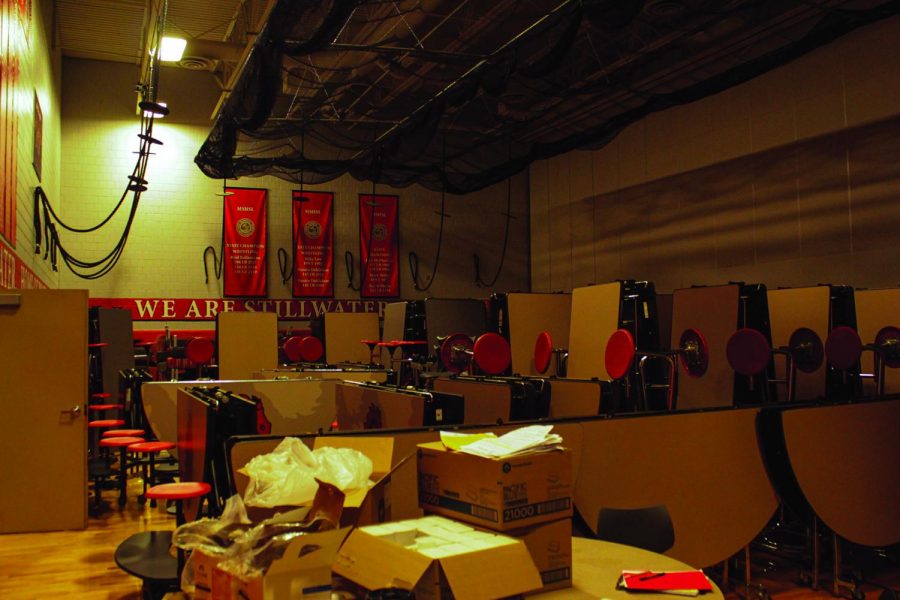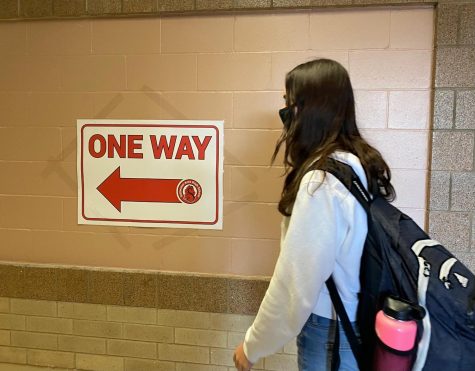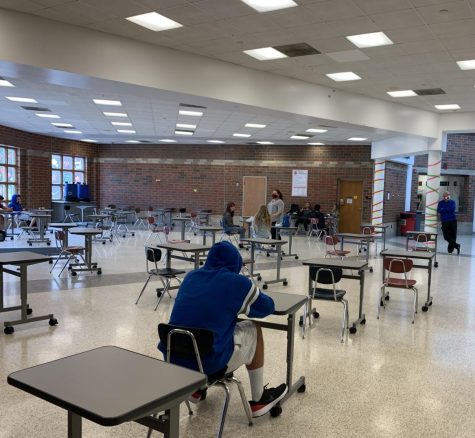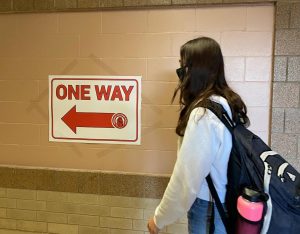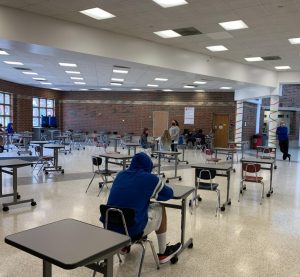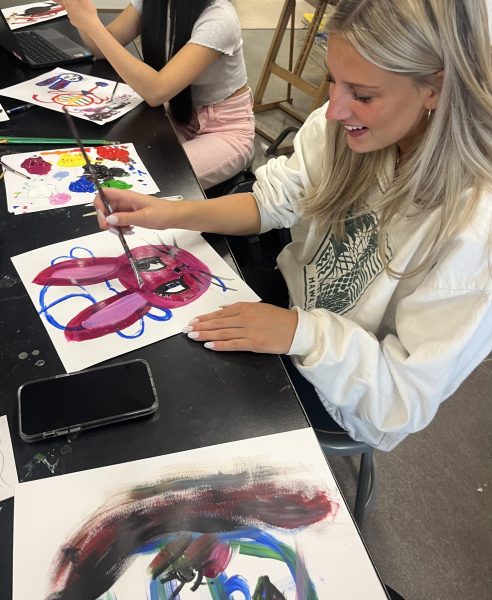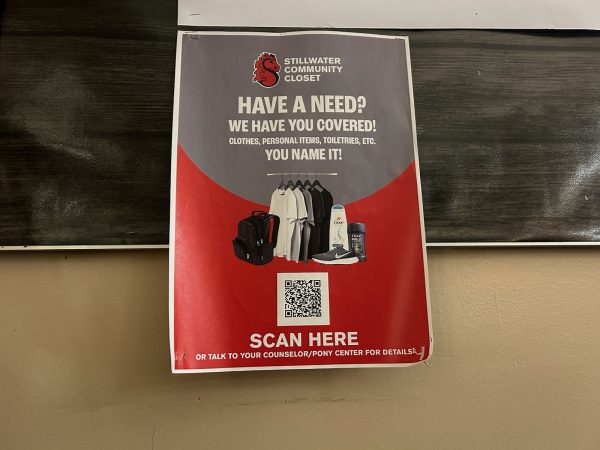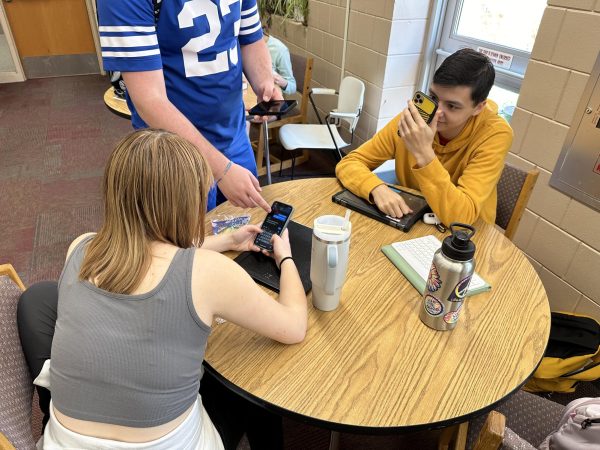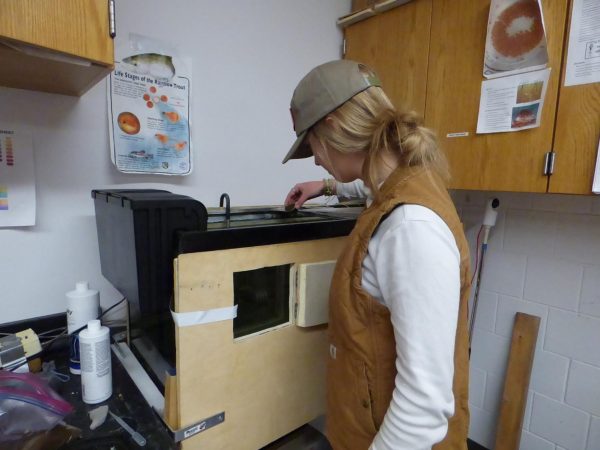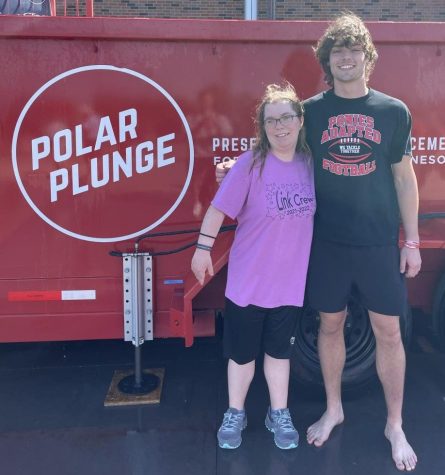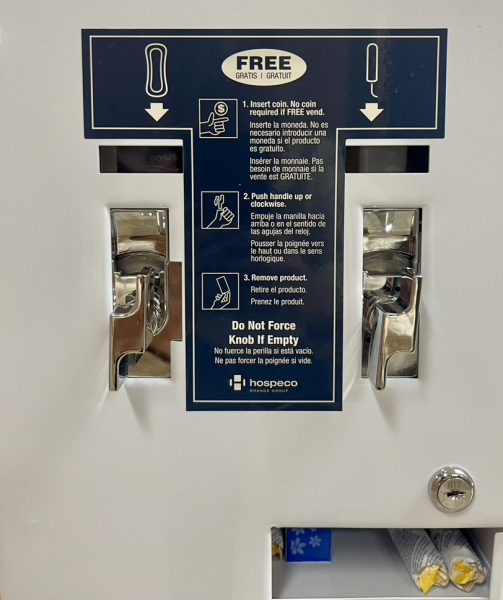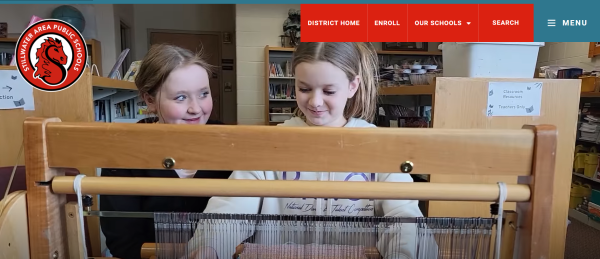Custodial response to COVID-19
The wresting gym overtaken by seating that custodians moved due to lack of social distancing ability.
October 1, 2020
Starting a school year in the middle of a worldwide pandemic is never an ideal situation. Head Engineer Mike Miller is combating the transmission of COVID-19 through proper sterilization of surfaces in the school, extra hours of laborious work, and temporary hires.
A recent study by the National Institute of Allergy and Infectious Disease showed that the coronavirus disease has remained on surfaces made of plastic or stainless steel for up to 2 to 3 days without sanitization. This led to the CDC stressing the importance of sanitization in the school and workplace.
“Our role isn’t so much cleaning anymore. It is sanitization. That is the most important thing,” said Head Engineer Mike Miller, “We’ll sanitize all the desks and the chairs in the room.”
Studies have shown that coronavirus spreads by respiratory droplets that escape the nose and mouth. These droplets can land on surfaces or objects that people touch. Minnesota has already begun to combat this aspect of the virus by enforcing a mask mandate, but concerns remain concerning the droplets contaminating the surfaces that we touch frequently.
“We are doing a lot more cleaning during the day than ever before,” explained Laura Larsen coordinator for facilities and site operations, when asked about this concern. “We have custodians disinfecting door handles, push plates, stair rails, drinking fountains, touch-points in restrooms, anywhere that people touch during the day. We are cleaning student tables/chairs and desks every night after class.”
Our role isn’t so much cleaning anymore. It is sanitization. That is the most important thing
— Michael Miller
Many businesses and schools have gotten rid of soft fabric seating since reopening. This is because porous surfaces are generally harder to disinfect when compared to hard and non-porous surfaces. These surfaces can be laundered or cleaned if they are not touched often. This has been a challenge for businesses and schools to adapt too.
“We do this,” Miller said while gesturing to the sea full of miscellaneous seating. “Yeah, because basically, we had to get rid of all the soft seating in the area … we can’t have the cafeteria tables because we can’t make social distancing or physical distancing happen.”
The CDC has also stressed the importance of having adequate supplies available to support the frequent cleaning and disinfection in schools. Taking into account the mass amount of disinfecting that has to occur daily, they recommend using safe cleaning supplies, EPA-approved disinfectants, or household solutions, to decontaminate surfaces.
“Last year we purchased a sprayer that we passed around to buildings where we had ‘hot-spots’ of coronavirus or other viruses,” explained Larsen. “Also, there is hand sanitizer and disinfectant wipes.”
Miller echoed this sentiment when he explained the original trouble they had with finding the correct products during the shortage that occurred earlier this year. “So, the nurses got together and said, you know, we should be able to make our own wipes … because we weren’t gonna be able to buy all this stuff to sanitize … so the nurses were using this stuff so we applied it to us. And we basically ordered it … this is what we use,” Miller explained, walking over to the tubs of aqua-colored sprayers. “You know you see tubs in every classroom? Yeah, see, we make them.”
Germs from unwashed and dirty hands can get into the body through the mouth, nose, and eyes. The CDC has stressed the importance of washing hands and using hand sanitizer regularly to stunt the spread of coronavirus.
“We’ve added hand sanitizing stations, kind of all around the school,” Principal Rob Bach stated when asked about the new systems put in place at the school. “My hope is, is that when COVID goes away we’ll still have a much safer building because all those things will still be in place.”
Surfaces that are regularly touched, such as doorknobs, faucets, railings, should be sanitized once a day, if not more, to ensure sanitization and safety. The recommended standard by the CDC is to clean these surfaces after every use.
“I got Catlin who, who now works 8 to 4:30, Monday, Tuesday, Wednesday, Thursday, and all she does is touch-points.” explained Miller, “So she walks around and basically cleans drinking fountains, and all the handles in the bathroom. Soap dispensers, paper towel dispensers, faucets, your toilet handles, all the railings on the stairwells. Any door exists, push bars. Anything like that.”
The custodial efforts to help prevent the spread of COVID-19 at our school by instating new practices and procedures have not gone unnoticed by students. “I’ve always been more thankful towards them because they’re cleaning everyone’s messes…” said senior Izzy Pick. “I appreciate everyone for what they do.” Sanitization and safety at the forefront of everyone’s mind, but confidence remains. “Is there anything else you’d like the readers to know about?” Miller pauses for a moment and says. “It’s safe.” His sentiment echoing those working and learning around him.


